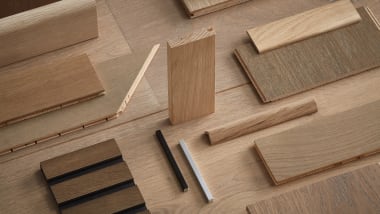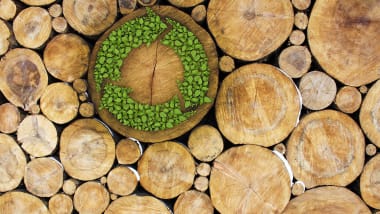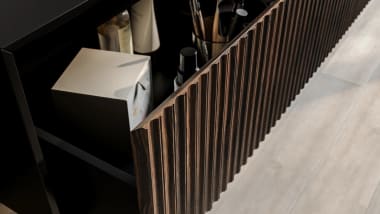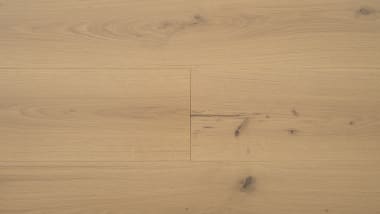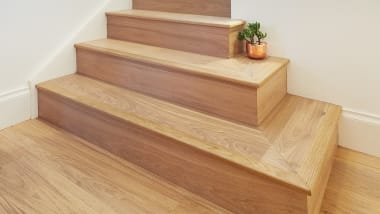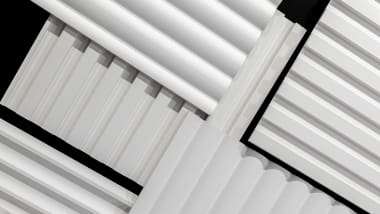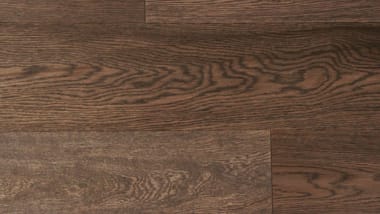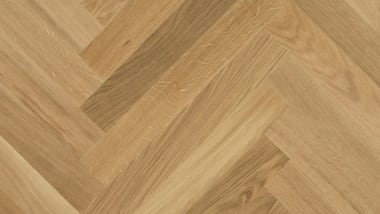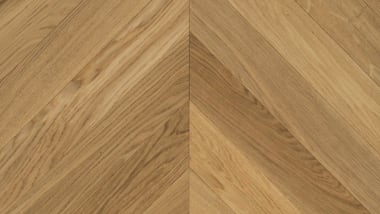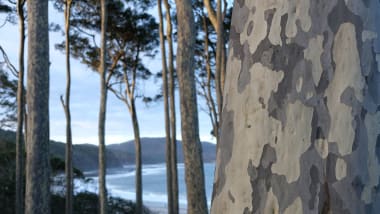A-Z of Timber Flooring
4 Dec 2019
This A-Z of timber flooring list will help ensure that you have a full understanding of the specifications, characteristics and requirements of the timber flooring product you choose. Timber flooring, like any specialised industry, has many technical terms that can be a little confusing or even intimidating if you are not familiar with the lingo.
We've put together a list of the most common terms you will come across when choosing your timber flooring product to help you navigate the in's and out's of the timber flooring world.
Choosing the perfect timber flooring can feel overwhelming, especially with so many industry-specific terms to navigate. Whether you're exploring various types of flooring, understanding the different timber gradings, or looking for the ideal finish, this A-Z guide will aid you in navigating timber flooring specifications, characteristics, and requirement
From classic herringbone and chevron patterns to traditional solid wood floors and their more modern alternative, engineered timber flooring, we've compiled the most essential terms to assist you in understanding and to be able to make an informed decision.
A
Adhesion - The process of bonding one material to another. In timber flooring, adhesion plays a crucial role in ensuring floorboards stay securely in place. The effectiveness of adhesion depends on the surface condition - ideally, it should allow penetration, be clean, and have the right level of porosity.
Explore Havwoods Adhesives for timber flooring here.
Annual Growth Ring - The concentric layers of wood growth formed within a tree during each growing season. These rings help determine the wood's age and density, which can affect its suitability for different types of flooring.
B
Basket Weave - A classic parquetry pattern where wooden blocks are arranged in a way that mimics a woven basket. This elegant design is often used in heritage homes and adds visual depth and interest to timber flooring.

Basket weave pattern using Havwoods HW3571 Mosman Herringbone timber flooring. Project by Cahill Building Group
Bevelled Edge – A manufacturing technique where the edges of a floorboard are chamfered, creating a small groove or ‘V’ joint when laid. This feature enhances the individual plank definition, making it a popular choice in various types of flooring including timber flooring.
Bleached/White Washed Floors – Timber floors that have been lightened using wood bleach, white stain, or both. This effect creates a modern, coastal aesthetic while highlighting the wood grain.
Explore our platinum and white washed toned timber flooring collection here.
Block – A term commonly used in parquetry flooring to describe individual wooden segments, such as herringbone blocks or chevron blocks.
Borders – Decorative designs that frame a flooring installation, adding a custom touch to timber floors. Borders can range from simple contrasting strips to intricate inlays.
Bowed – A type of wood distortion where a plank curves along its length, making installation difficult. Proper acclimatisation of floorboards before installation helps prevent bowing.
Brushed – A manufacturing technique that uses copper or wire brushes to create a textured surface on the timber, enhancing its natural grain. Many of Havwoods' timber products feature a beautiful, brushed finish
C
Chamfer/Chamfered – Similar to a bevelled edge, a chamfer is a sloped cut made at an angle (often 45°) to soften sharp edges, creating a distinct shadow line when floorboards are installed.
Chevron – A striking and timeless parquetry pattern where floorboards are cut at an angle and arranged to form a continuous ‘V’ shape. This design is popular in high-end interiors.

Chevron pattern using Havwoods HW16604 Pallido Chevron timber flooring.
Colour Change – The natural alteration of a timber’s shade over time due to exposure to light and air. Some species develop a richer patina, while others may lighten.
Crowning – A condition where the centre of a floorboard is higher than its edges, often caused by excessive moisture or improper acclimatisation.
Cupping – The opposite of crowning, where the edges of a floorboard rise higher than the centre, creating a concave shape. This often results from humidity imbalances.
Character Grade – A wood grade classification featuring larger knots, natural colour variations, and other distinguishing characteristics. It is ideal for those who prefer a more rustic and natural look.
Learn more about timber grades here.
Checks – Small cracks across a wood’s growth rings, typically found at the ends of floorboards. These natural imperfections do not usually affect structural integrity.
Classic Grade – Sometimes referred to as Select Grade, this type of timber flooring features minimal knots and uniform colour, offering a more refined appearance.
Learn more about timber grades here.
Click System – A flooring installation method where planks have interlocking edges, allowing them to ‘click’ together without the need for adhesives. Click system floors are commonly found in engineered and hybrid flooring types due to their ease of installation and ability to be installed as a floating floor.
D
DPC (Damp-Proof Course) – A protective barrier in a building’s structure that prevents moisture from rising up into the flooring. It is essential in humid environments to ensure timber floorboards remain as moisture free as possible which in turn keeps them stable and durable.
DPM (Damp-Proof Membrane) – A layer applied to subfloors to block moisture from seeping into timber flooring. Without a DPM, excess moisture can cause cupping, crowning, or warping of timber floorboards.
Delaminating – The separation of layers in engineered timber flooring due to adhesive failure or excessive moisture. Proper maintenance and installation help prevent this issue.
Distressed – A surface treatment that gives floorboards an aged, weathered appearance. Techniques such as hand-scraping, wire-brushing, and tumbling create imperfections that add character to the wood.
Find products with distressed finishes in our Relik and Henley collections.
E
End Joint – The point where two floorboards meet at their shorter ends. A well-crafted end joint ensures seamless integration between planks.
End Matched – A precision-milling process where the tongue and groove of floorboards extend along both the length and width of each plank, ensuring a tight and stable fit during installation.
Engineered Timber Flooring – A multi-layered flooring board construction using a real wood top layer, bonded to a plywood or high-density fibreboard (HDF) core. Engineered wood flooring is one of the most popular types of flooring, offering the beauty of solid wood with greater sustainability, stability and resistance to moisture changes.

Havwoods HW6230 Bellmore engineered timber flooring featured in Hipwell House
F
Feature Strip – A decorative strip of wood placed at thresholds, borders, or room divisions to create a visual accent. Often used in parquetry flooring for added elegance.
Figure – The natural patterns and markings in timber caused by the grain structure, annual growth rings, and knots. The figure contributes to the aesthetic appeal of different wood species.
Filler – A compound used to fill small gaps, knots, or imperfections in timber flooring before finishing. The colour of the filler is carefully matched to the wood for a seamless look.
Finish – The protective coating applied to timber flooring to enhance durability and aesthetics. Common finishes include lacquer, oiled, and UV-cured coatings.
Flecks – Irregular markings in quarter-sawn oak flooring, formed by the tree’s medullary rays. These unique patterns add depth and character to floorboards.
Floating Floor – A type of flooring installation where the planks are not directly nailed or glued to the subfloor. Instead, they are laid over an underlay, allowing the floor to expand and contract naturally. Floating floors are commonly used in engineered and hybrid flooring that have a click system profile, due to their ease of installation.
G
Grade – A classification system for timber based on its natural features, such as knots, sapwood, and colour variation. Common grades include Prime, Classic, and Rustic.
H
Hand Scraped – A technique used to create a textured, time-worn appearance on floorboards by manually scraping the surface. This method enhances the rustic charm of timber flooring.
Hardness – A measure of a wood species' resistance to dents and wear, often determined by the Janka hardness rating. Harder woods like oak, hickory, and maple are more durable, making them ideal for high-traffic areas.
Hard Wax Oil – A finish combining natural vegetable oils and wax to protect and nourish timber flooring while maintaining its natural look and feel.
Hardwood – Timber sourced from deciduous trees with broad leaves, such as oak, walnut, and maple. Hardwood species are commonly used in solid and engineered timber flooring.
Heartwood – The dense, inner part of a tree that provides strength and durability to floorboards. It is usually darker and more resistant to decay than sapwood.
Herringbone – A classic and timeless parquetry pattern where rectangular blocks are arranged in a staggered zig-zag formation. Herringbone flooring adds elegance and sophistication to interiors.
Explore our herringbone timer products here.
High-Density Fibreboard (HDF) – A highly compressed wood product used as the core layer in some engineered and hybrid flooring types. HDF enhances the durability and stability of the floor.
Humidity – The amount of moisture in the air, which can affect the expansion and contraction of timber flooring. Maintaining optimal indoor humidity levels (between 40-60%) is crucial for preventing warping or shrinkage of floorboards.
Hygrometer – A device used to measure relative humidity levels, helping to maintain the ideal environment for timber flooring.

Herringbone pattern using Havwoods HW16002 Pallido Herringbone | Project: North Steyne Beachfront Home by Designer Your Beautiful Home
High-Density Fibreboard (HDF) – A highly compressed wood product used as the core layer in some engineered and hybrid flooring types. HDF enhances the durability and stability of the floor.
Humidity – The amount of moisture in the air, which can affect the expansion and contraction of timber flooring. Maintaining optimal indoor humidity levels (between 40-60%) is crucial for preventing warping or shrinkage of floorboards.
Hygrometer – A device used to measure relative humidity levels, helping to maintain the ideal environment for timber flooring.
I
Impact Resistance – The ability of a floorboard to withstand force or pressure without denting or cracking. Hardwoods such as oak and maple have high impact resistance, making them ideal for high-traffic areas.
Installation Methods – The techniques used to lay flooring, including floating floors, glue-down, nail-down, and click systems. The best installation method depends on the type of flooring, subfloor condition, and environmental factors.
J
Joist – A structural beam that supports the subfloor and flooring above. Floorboards are typically installed perpendicular to joists for stability and strength.
K
Kiln-Dried – A controlled drying process that reduces the moisture content in timber, enhancing its stability and resistance to warping. Kiln-drying is essential for high-quality floorboards to assist in preventing movement after installation.
Knot – A natural imperfection in wood where a branch once grew. Knots add character and variation to timber flooring, especially in Character and Rustic Grade timbers.
L
Lacquer – A protective finish applied to timber flooring to enhance aesthetics and durability. Lacquer creates a hard, glossy surface that is resistant to wear and spills.
Laminate Flooring – A synthetic flooring type composed of a high-density core, a photographic layer that mimics wood, and a clear protective coating. While it resembles hardwood, it lacks the authenticity of real timber and often contains harmful VOCs.
Lamella – The top layer of engineered timber flooring, typically made from real hardwood. The thickness of the lamella determines how often the floor can be sanded and refinished.
M
Mineral Streak – A naturally occurring discolouration in timber caused by the tree absorbing minerals from the soil. These streaks add unique patterns to floorboards.
Moisture Content – The percentage of water in wood, which influences its expansion and contraction. Proper acclimatisation of timber flooring before installation helps maintain balance with indoor humidity levels.
Mosaic Parquet – A traditional parquetry style where small wooden blocks are arranged in a checkerboard pattern, adding texture and visual interest to floors.
Medullary Rays – Natural wood grain patterns created by the transport of nutrients in the tree. These markings, commonly seen in quarter-sawn oak, add character to timber flooring.
N
Nosing – A finishing piece applied to the edge of stairs, landings, or step-downs to create a smooth transition and improve safety.
Havwoods can supply nosing for stairs to match or compliment many of our timber products. Read our article on how to match stairs to your flooring here or get in touch for more information.
O
Open Grain – A texture where the wood’s pores are more visible, often found in species like oak and ash. Open-grain woods absorb more stain, creating deeper colour variations.
P
Parquet Flooring – A decorative timber flooring type where small wood pieces are arranged in geometric patterns, such as herringbone, chevron, and basket weave.
Plain Sawn – A milling method that produces floorboards with a traditional, wavy grain pattern. It is the most common and cost-effective sawing technique.
Plank – A long, wide floorboard, typically used in solid or engineered timber flooring.
Plywood – A structural panel made by layering thin sheets of wood, used as a core material in engineered flooring for added strength and stability.
Polyurethane – A durable finish used on hardwood flooring to protect against wear, moisture, and stains. Available in both water-based and oil-based formulas, polyurethane enhances the longevity of timber floors.
Pre-finished Flooring – Timber flooring that has been factory-coated with a protective finish before installation. This reduces on-site work and allows for immediate use after installation, reducing both time and cost of installation.
Prime Grade – A wood grading category featuring minimal knots, uniform colour, and fewer imperfections, offering a clean and modern look.
Q
Quadrant – A convex-shaped timber moulding, usually supplied in 2-3m lengths, used to cover expansion gaps along the perimeter of a timber floor for a polished finish.
Quarter Sawn – A cutting method where logs are sawn at a 90-degree angle to the growth rings, producing a straight, uniform grain. Quarter-sawn oak is particularly sought after for its stability and decorative medullary rays.
R
Rays, Wood – Also known as medullary rays, these are natural wood markings that run perpendicular to the growth rings. These distinct patterns, often seen in oak flooring, enhance the aesthetic appeal of timber.
Reclaimed Timber – Wood salvaged from old buildings, barns, or other structures and repurposed for flooring. Reclaimed wood offers a rustic, timeworn look and is an eco-friendly floorboard option.
Explore our collection of reclaimed timber options here.
Relative Humidity (RH) – The percentage of moisture in the air, which directly affects the expansion and contraction of timber flooring. Maintaining indoor RH between 40-60% helps prevent cupping and warping.
Rustic Grade – A wood grade classification that allows for large knots, natural colour variation, and more pronounced grain patterns, giving floors a warm and character-rich appearance. Popular in country style designs and hospitality projects.
S
Sanded and Filled – A finishing process applied to unfinished timber flooring, where open knots and imperfections are filled using filler before staining and sealing to create a smooth surface.
Sapwood – The lighter-coloured, outer section of a tree trunk that transports nutrients up and down the tree. Compared to heartwood, sapwood is generally softer and more susceptible to moisture but contributes to beautiful natural colour variation in floorboards.
Scotia – A concave or half-round timber moulding used to cover expansion gaps between the flooring and skirting boards, ensuring a neat and seamless look.
Screed – A levelling compound used on subfloors before installing timber flooring to create a smooth, even surface. Screeding is especially important for floating and glue-down floor installations.
Select Grade – Also called Classic Grade, this wood grading category features minimal knots and uniform colour for a more refined appearance.
Shake – A natural split or crack along the grain of wood. While shakes may appear in rustic-grade flooring, they are generally avoided in prime-grade floorboards.
Smoked Timber – A wood treatment process that darkens timber using ammonia exposure, enhancing its natural grain and adding depth to the wood's colour.
Softwood – Timber sourced from coniferous trees like pine and fir. While softwoods are widely used in construction, hardwoods like oak and walnut are preferred for flooring due to their durability.
Solid Timber Flooring – Flooring made from 100% natural hardwood planks, offering longevity and the ability to be sanded and refinished multiple times. Solid wood flooring was traditionally one of the most sought-after types of flooring for premium interiors however due to modern advances with engineered timber flooring that make it the more durable, cost-effective and sustainable option, the popularity of solid timber flooring has decreased.
Species – The specific type of wood used for flooring, such as oak, maple, walnut, or ash. The choice of species impacts the durability, grain pattern, and colour of the flooring.
Explore the variety of species offered by Havwoods here.
Square Edge – A flooring profile where the planks have sharp, straight edges rather than a bevel. This creates a smooth, seamless look when installed.
Staining – The process of applying a colour-enhancing treatment to timber flooring, altering its natural hue while highlighting the grain.
Stair Nosing – A specially shaped floorboard that covers the front edge of a step, providing a smooth transition between stair treads and improving safety.
Subfloor – The base surface upon which flooring is installed, typically made of concrete, plywood, or existing timber floorboards. A well-prepared subfloor ensures stability and longevity for timber flooring.

Stair nosings using Havwoods HW1396 Natural timber planks to match the HW1390 Versailles Natural timber flooring
T
Texture – The feel of a timber floor's surface, ranging from smooth and polished to rough and wire-brushed for added character.
Threshold – A transition piece used between different flooring types or at doorways to create a seamless flow between rooms.
Tongue and Groove (T&G) – A traditional flooring installation method where planks have a tongue (a protruding edge) on one side and a groove on the other, allowing them to fit snugly together.
Trim – The finishing materials, such as skirting boards and scotia, that complete a flooring installation and enhance the room’s aesthetics.
U
Underlay – A cushioning layer placed beneath floating timber flooring to enhance comfort, provide sound insulation, and protect against moisture.
Explore underlay options stocked by Havwoods here.
Unfinished Flooring – Raw timber flooring that requires sanding, staining, and sealing on-site after installation. This allows for complete customisation of colour and finish.
UV-Cured Polyurethane – A durable, scratch-resistant floor finish that is hardened using ultraviolet light, providing superior protection for high-traffic areas.
V
Vapour Barrier – A protective layer that prevents moisture from rising through the subfloor into the timber flooring, essential in humid environments or when installing over concrete.
Veneer – The top layer of engineered flooring, made from real hardwood, which provides the appearance of solid timber while ensuring greater stability.
Versailles Pattern – A decorative parquet flooring style featuring intricate geometric designs, originally created for the Palace of Versailles in France.
VOCs - VOCs, or Volatile Organic Compounds, are gases released from certain materials, including some finishes and adhesives used in timber flooring. In flooring, low-VOC products are preferred because they emit fewer chemicals into the air, making them better for indoor air quality and your overall health.
All of Havwoods products are low VOC, meeting European standards. Many of our products also boast third party certification such as FloorScore or Indoor Air Comfort Gold certification.
W
Wide Board Flooring – Floorboards that are wider than standard planks, creating a more spacious and luxurious look. Wide boards enhance the natural grain of the wood and are popular in modern and rustic interiors.
Read the following articles for more information on wide board timber flooring:
Width – The measurement across the face of a floorboard, impacting both aesthetics and installation time. Wider planks cover more area and can make a room appear larger.
Wire Brushing – A surface treatment where floorboards are brushed with steel bristles to remove softer wood fibers, accentuating the grain and adding texture.
Wood Species – The specific type of tree used for timber flooring, such as oak, walnut, or ash, each with unique properties affecting durability, colour, and grain.
Get in touch to learn more about timber floors
The A-Z of timber flooring list covers the most common terms you will come across when researching and selecting your timber floor. If there is a term that you have come across that is not covered here, get in touch today and we can help you out. You will also be helping us to add new words to this list to in-turn help others who are needing clarification on any timber flooring terms.











